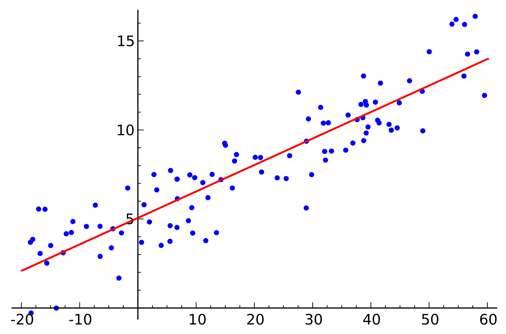1 min read
5 Key Data Science Skills: You Need in Your Data Scientists
Looking for companies who can handle your initiatives in big data can be very challenging. Now a days every IT company is trying to position itself...

Data Mining refers to discovering valuable knowledge out of huge clusters of data to infer patterns. Data Mining is the result of the proliferation of Computing Technology which has enabled to collect, store and process humongous data. The Pre-processing, Data Mining and Results Validation are the three steps which lead to Knowledge Discovery In Database.
When there exists plethora of data, targeting the data which will be relevant for you is of prime importance. Data mining can work only if the data available is huge enough for the patterns to be deduced and is concise enough for making it possible to be handled within a specific time limit. The source of data for pre-processing is Data Warehouse, where data is assembled from disparate sources. The data there undergoes a cleansing so that the quality is not compromised.

There are six phases according to CRISP-DM, which is the standard Data Mining Process:
1. Business Understanding - A framework is made keeping in mind the objectives of the business. Keeping in mind the problems in business, a data mining problem definition is framed.
2.. Data Understanding- Data is explored using a traditional tool like statistics to find the properties, accuracy, and completeness of data.
3. Data Preparation- As some of the mining functions accept data in certain formats, it is cleansed and transformed to be suitable for feeding it to modeling tools.
4. Modeling- It’s the experimental phase in which various modeling techniques are applied as there are several techniques for the same data mining problem type.
5. Evaluation- The model is evaluated to assess its quality so that it can be concluded whether the model which is designed adheres to the requirements from the business perspective.
6. Deployment- The knowledge which is gained is put into production and is organized and presented in a way which can be of some use for the customer.

Association- A pattern is discovered by comparing the items involved in the same transaction over a business period. This technique is used in Market Basket Analysis to analyze the purchasing behavior of the customers.
Classification- This technique is based on Machine Learning. The data is analyzed by classifying it into different classes. For example in Outlook e-mail, certain algorithms are used to characterize it as legitimate or spam. Or when a bank loan officer wants to know which customer is risky or safe.
Clustering- It’s a technique to group the similar objects. It is used in many fields such as machine learning, pattern recognition, image analysis, information retrieval, bioinformatics, data compression, and computer graphics.
Regression-This technique is used to predict the relationship between two or more variables. Linear Regression is a widely used technique to establish a relationship between a dependent variable and the independent variable. For example- a regression function can be used to predict the value of a house based on location, the number of rooms, etc.

Data mining can help you to understand the behavior of your customers and earn substantial profits by reducing the churn rate. It’s importance can be seen in several fields. Healthcare, E-commerce, Marketing, Education, Manufacture Engineering, Customer Relationship Management, Banking, and Bioinformatics to name few.

Let us explore its relevance in some of the fields:
Healthcare
Data Mining in Healthcare helps in making more accurate diagnosis and reduce costs. It can help in analyzing the inefficiencies, give targeted treatment to patients, help in reducing medical errors, provide thorough documentation and improve patient care and satisfaction. A research from EMC2 and IDC states that healthcare data is growing at an annual rate of 48 percent. Better use of data will help in making informed decisions in lower costs.
Data Mining in e-commerce helps in understanding buyer’s behavior. By analyzing the patterns of behavior, the layouts are changed accordingly to persuade the buyer to purchase more. It’s application ranges from product search, product recommendation, fraud detection, and business intelligence.
Educational Data Mining in education helps in understanding the future learning behavior of students, what to teach, how to teach and advance in scientific knowledge about learning. It also helps in understanding the settings in which the students learn and the motivation behind the learning.
We at NewGenApps have an expertise in Data Mining. To know how it can supplement your business, get in touch.

1 min read
Looking for companies who can handle your initiatives in big data can be very challenging. Now a days every IT company is trying to position itself...

By processing the data in motion, real-time Big Data Processing enables you to walk in parallel with the current landscape of your Business and turn...